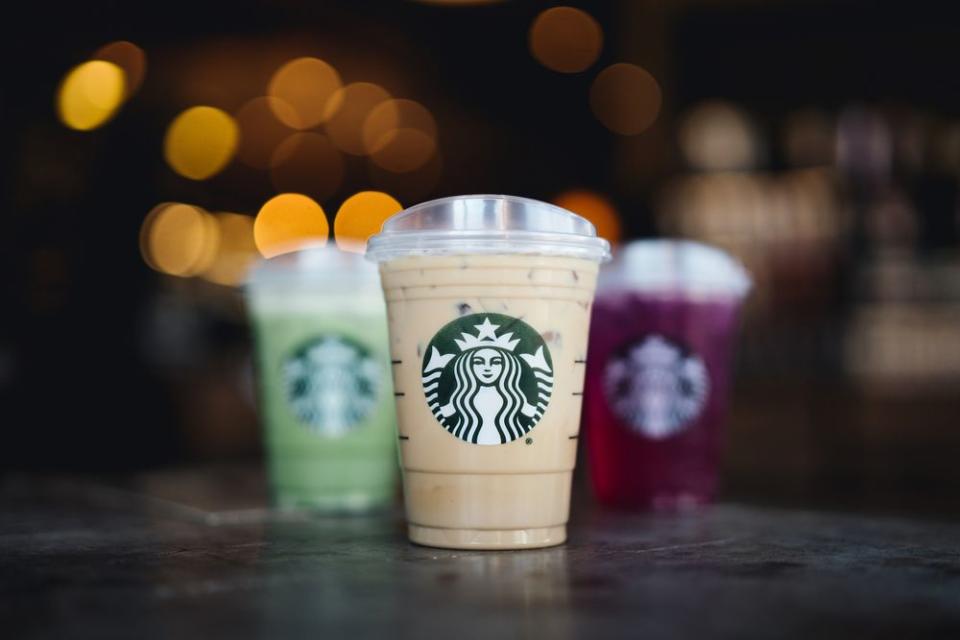4 Sneaky Ways Starbucks Gets You to Spend More Money
Highly-anticipated seasonal beverages. Drink orders that pair with zodiac signs. Nationwide delivery. Starbucks is a clever multinational corporation; you don’t get to open locations on every corner without having some tricks up your sleeve. Some of those tricks are designed to get customers to drop just a little more cash than they otherwise would have. It’s not always about spending $20 instead of $2; at the volume Starbucks has, an increase by a quarter is a huge deal. Here are some of the ways Starbucks extracts a little bit more from your wallet.

1. The Hidden Small Size
Starbucks has, as everyone knows at this point, three sizes: tall, grande, and venti. Or does it? Every Starbucks also has a fourth option: short, clocking in at 8 ounces. But the short option isn’t usually found on the menu; you have to know to ask for it. The short size isn’t all that much cheaper than the tall size—often around 10 cents—but keeping the smallest and cheapest option off-menu is a way to get customers to opt for more coffee than they might otherwise want.
Here’s another reason: there’s a phenomenon called the “middle option bias,” which is, well, pretty self-explanatory. When given three options, people often choose the one in the middle—theoretically neither too big nor too small. The middle option of Starbucks sizes is, as presented, the grande, which is typically around 50 cents more than the tall size. And the tall size, remember, is actually a middle size.
Related: We Tried Starbucks' New Cloud Macchiato—Here Are Our Thoughts
2. Limited-Edition Choices
There’s no technical reason why Starbucks can’t offer a pumpkin-spice latte year-round. After all, there’s no pumpkin in it, and the spices—nutmeg, clove, cinnamon—are widely available. The reason the company only offers it seasonally is to get people in the door. You might not necessarily be a regular Starbucks customer, but that pumpkin-spice is only available for a few short weeks, and plenty of customers opt to get it while they can. If it was available year-round? There might not be the same pressure.
The company has since expanded seasonal offerings to simply stuff that’s only available for a limited time, like the Unicorn Frappuccino.
3. A Robust Impulse Buy Section
The impulse-item section is a ploy commonly found in grocery stores: as you’re checking out, you’ll see a selection of low-cost stuff, like mints and batteries, that you might have forgotten—or never really intended to buy. Starbucks has the same thing, but theirs is robust: the prepared-food section, with beverages and sandwiches, is often right next to the register, along with a usual selection of cheaper stuff like cookies and mints.
Related: 13 Iced Starbucks Drinks for Summer That Are 100 Calories or Less
4. The Cold Revolution
The big secret about cold brew coffee is that it isn’t difficult or expensive to make at all—just a little slower. Cold brew is made simply by placing normal coffee grounds in cold water and letting it sit overnight (try it at home with this recipe). Given that, there’s no particular reason why cold brew should cost more than a regular iced coffee, and yet Starbucks charges up to a dollar more for cold brew compared to iced coffee at the same size.
And with cold brew coffee a major national hit, even in winter, Starbucks is reaping the benefits of charging more for a slower, but no more expensive, iced beverage.

